The Magic of the Original Star Wars Trilogy Matte Painting Artists
 In a few days we’re going to discover the magic behind the special effects that helped make Star Wars: The Force Awakens one of the biggest blockbusters of all time. With the release of the Blu-ray on April 5th, fans will be able to see what went into the making of the film that returned Star Wars to its glory days. Many fans wanted a return of the look and feel of the original trilogy and that’s exactly what they got. Something must have been gone right in the early days of the effects industry to have fans want the feel of the visuals and effects of old to return.
In a few days we’re going to discover the magic behind the special effects that helped make Star Wars: The Force Awakens one of the biggest blockbusters of all time. With the release of the Blu-ray on April 5th, fans will be able to see what went into the making of the film that returned Star Wars to its glory days. Many fans wanted a return of the look and feel of the original trilogy and that’s exactly what they got. Something must have been gone right in the early days of the effects industry to have fans want the feel of the visuals and effects of old to return.
Although, the techniques in effects have changed over the years the original Star Wars trilogy still stands the test of time and holds up to many modern special effect films. Some of these stunning effects, visuals and imagery were created using matte paintings and can be seen in many of the most iconic and most memorable scenes in the films.
What makes some of the original effects shown in the original trilogy hold up against what was seen in The Force Awakens? To find out, lets take a look at some of the pioneers and masterful artists that are legends of the industry.
Most fans of Star Wars films have heard of Ralph McQuarrie, the man most responsible for the look and feel of the Star Wars universe. McQuarrie not only created special paintings and sketches for the Star Wars movies but also used Matte Paintings to create the magical worlds imagined by George Lucas. In fact, several of his original concept arts served as the inspiration for the JJ Abrams’ Star Wars: The Force Awakens. Other legendary artists like Chris Evans, Michael Pangrazio, Frank Ordaz, Harrison Ellenshaw also had a hand bringing Star Wars to life on screen.
Many blockbuster films in the pre-CGI era utilized the matte painting with a combination of complex in-camera trickery. Film footage would be shot with areas of the film left unexposed, and later the matte artist would paint in the missing areas of the shot by hand. This pioneering special effects technique can be seen in many films released before the mid-1990s.
In 1985, a BBC’s Horizon documentary gave us an inside look at ILM and its pioneering special effects. This important documentary focuses on subjects such like optical printing, matte painting and even rotoscoping.
A portion of this documentary that deals with the Matte Painting master artistry can be seen here:
ILM was the master of oil matte painting in that time, making audiences believe that some of the sets in the original Star Wars were real when they weren’t.
From the Death Star, Slave 1, Cloud City, the Endor moon and even Jabba’s Palace, these artists created environments that looked so real that even the naked eye couldn’t tell the difference on a cinema screen.
Let us never forget the legendary artists like Chris Evans, Michael Pangrazio, Frank Ordaz, Harrison Ellenshaw who along with McQuarrie helped make Star Wars become what it is today.
You can see more of this amazing masterful work in pictures Here.
May the Force be with you….
Thanks to Sploid’s Jesus Diaz for some details in the writing of this article.

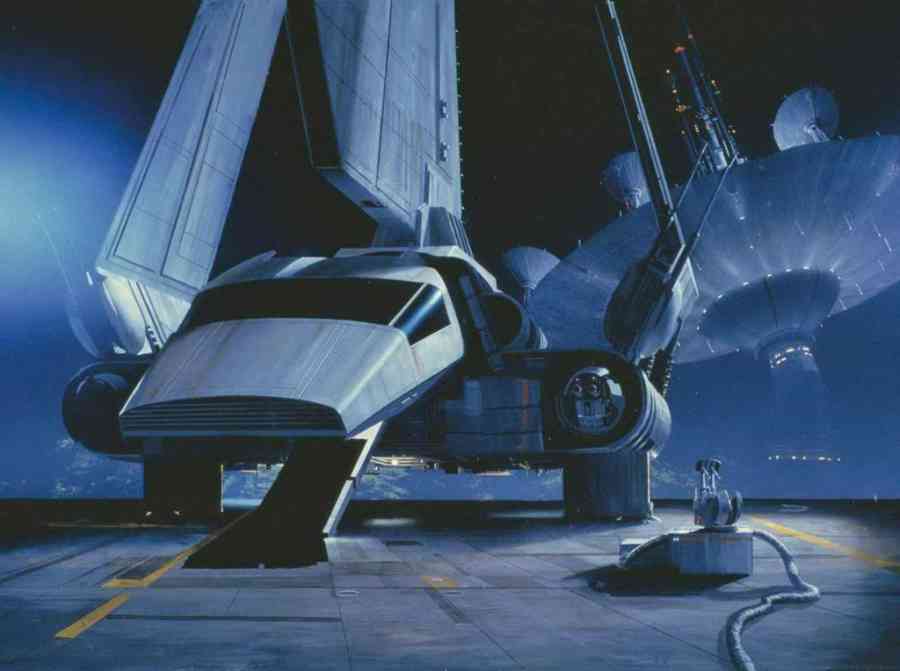
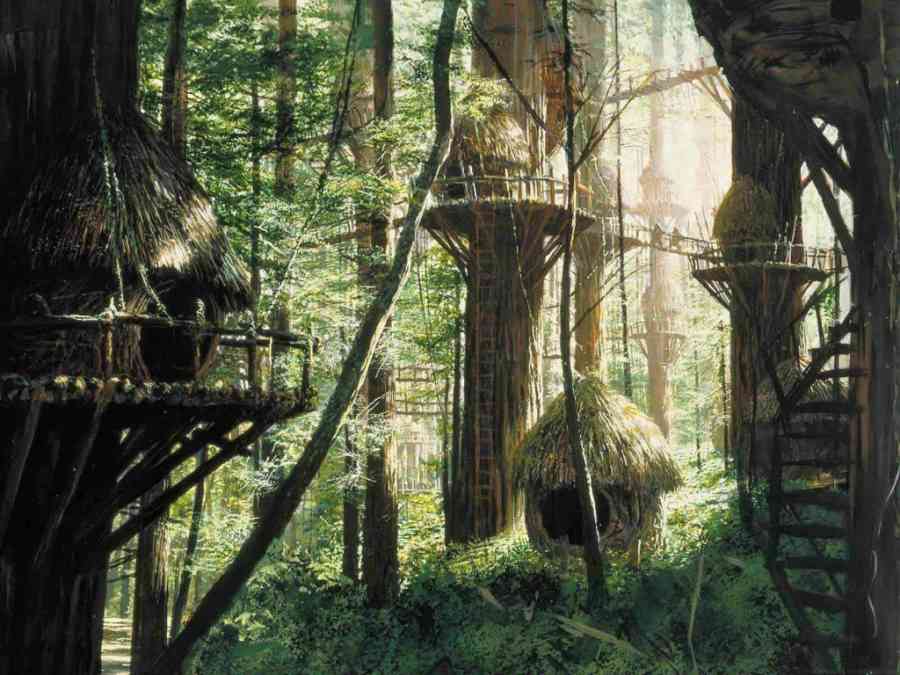
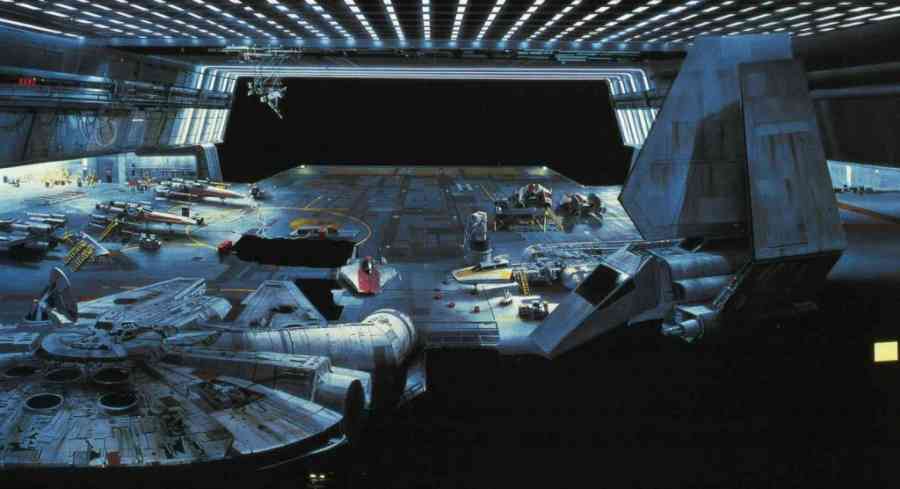
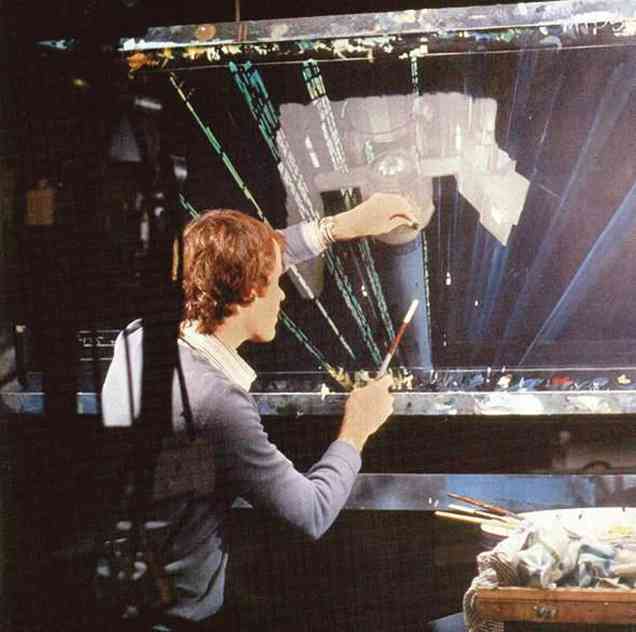
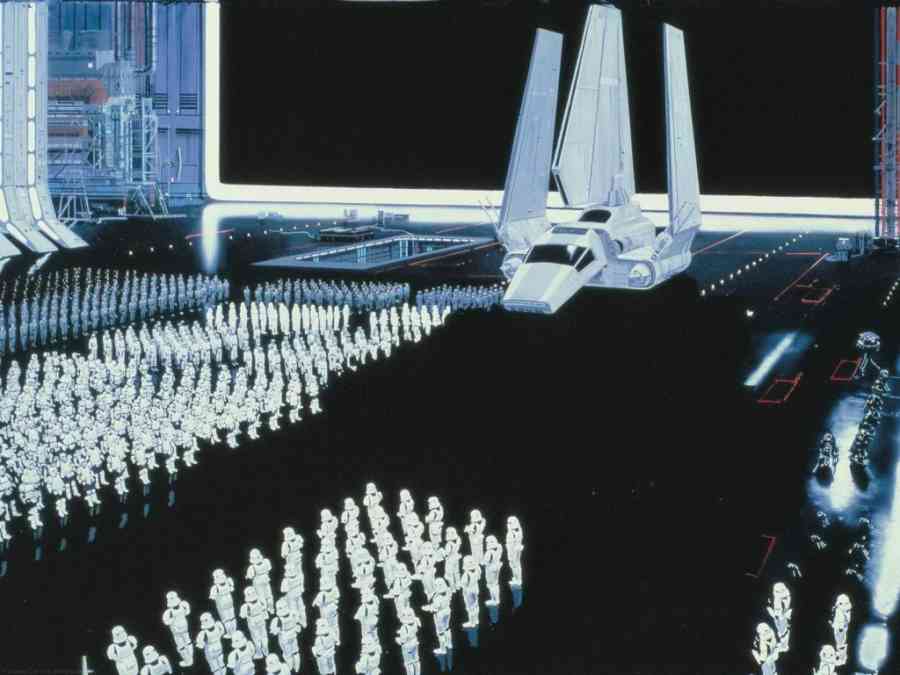
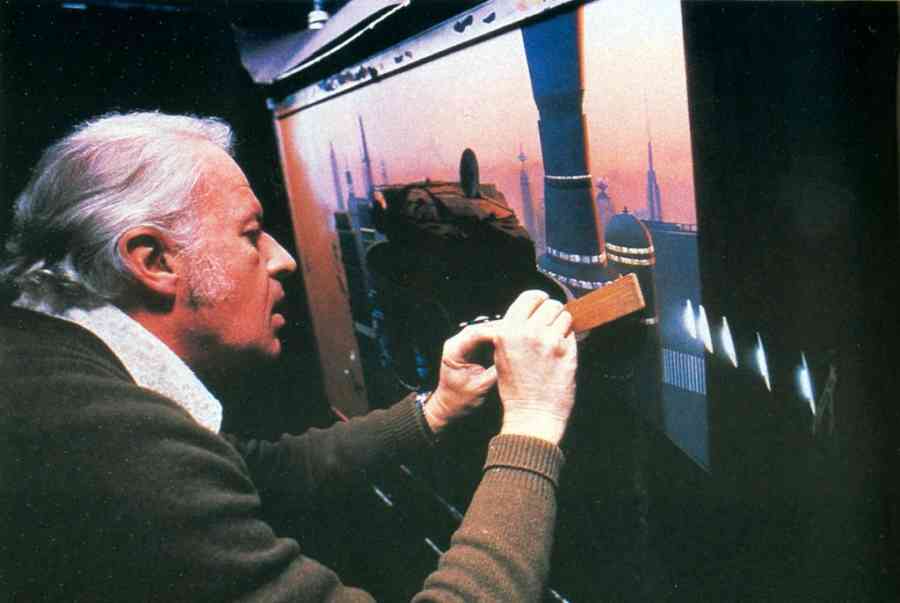
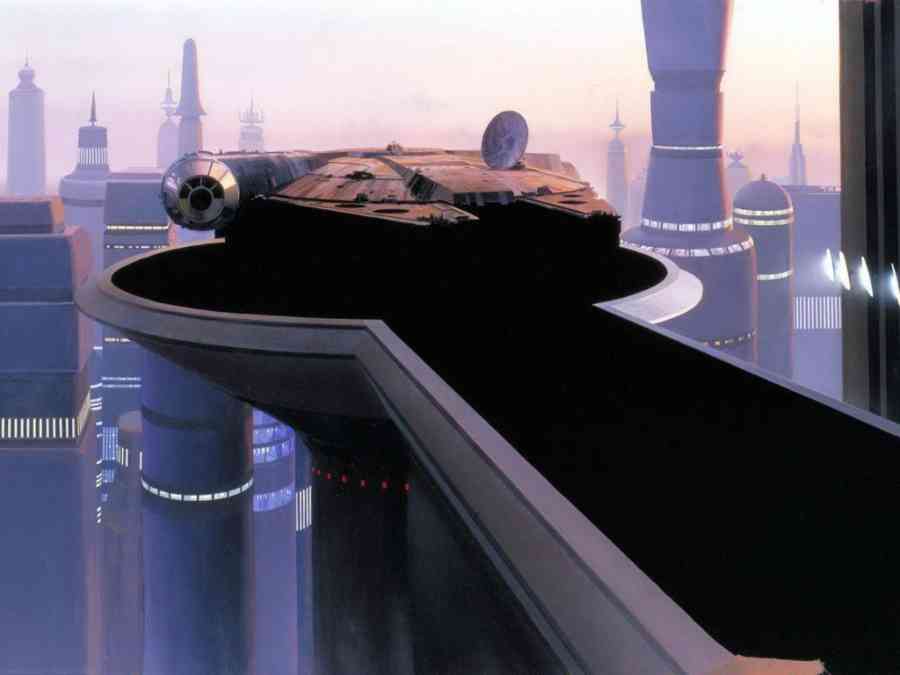


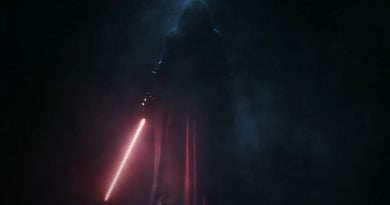
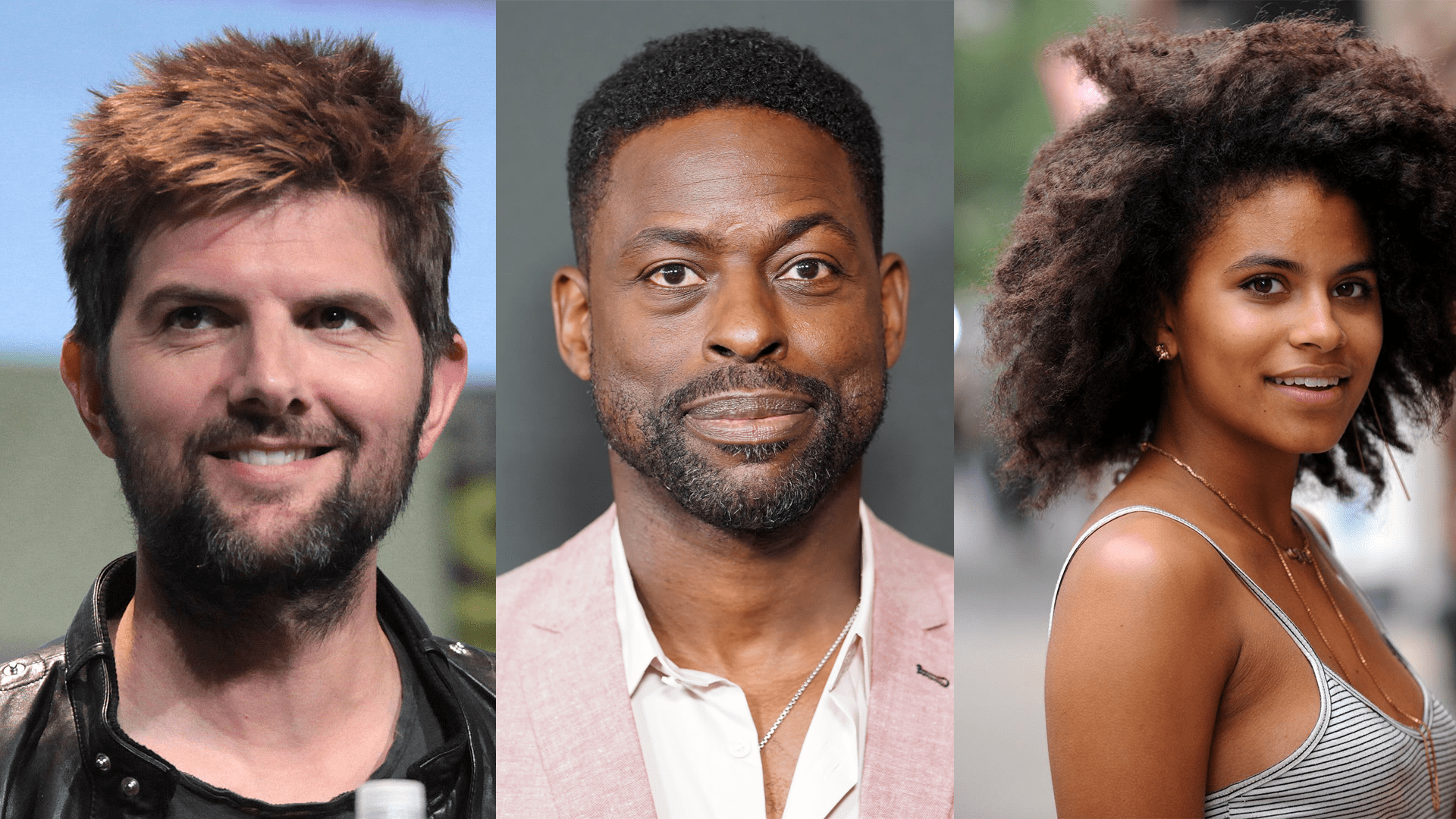
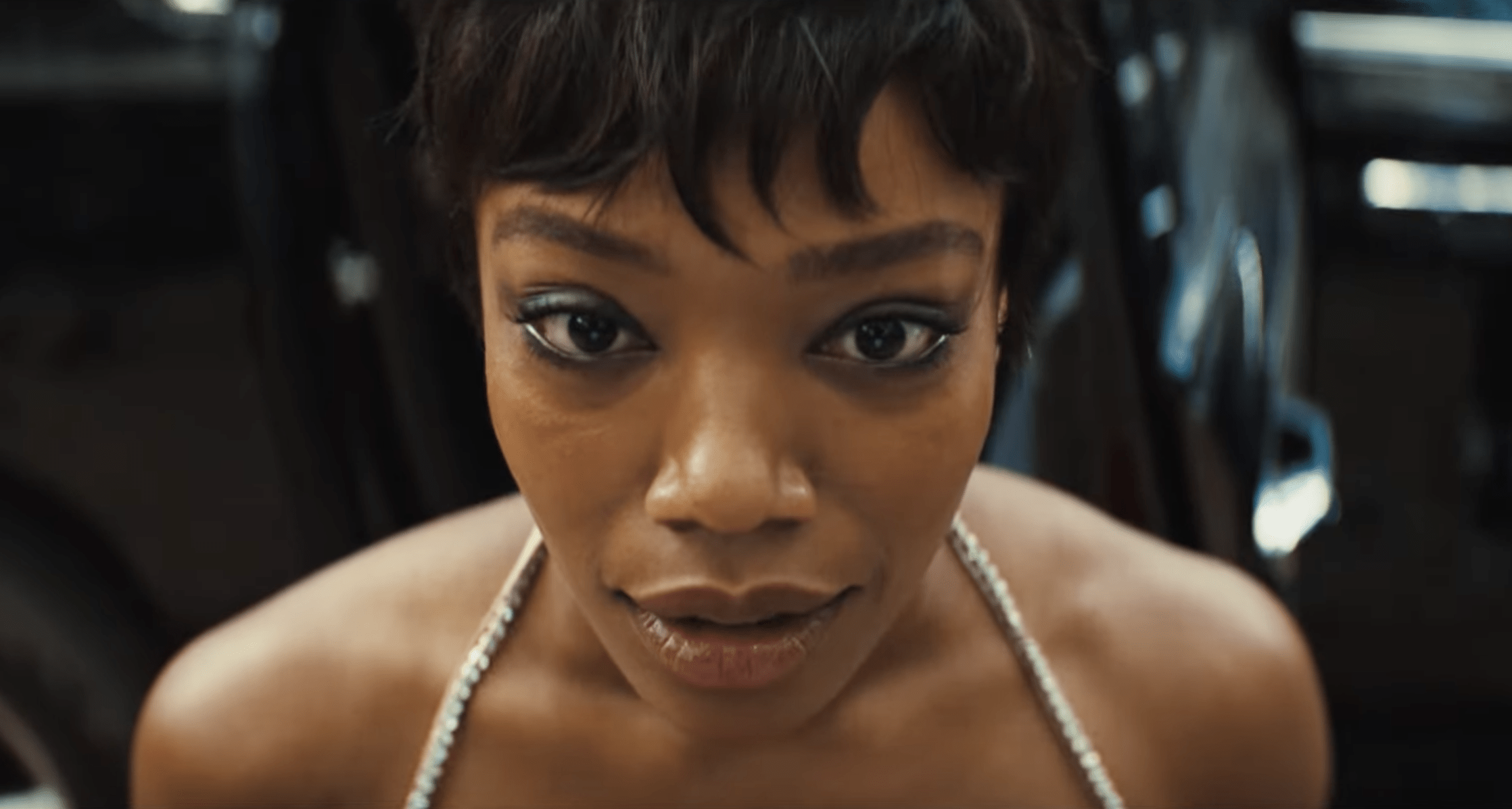
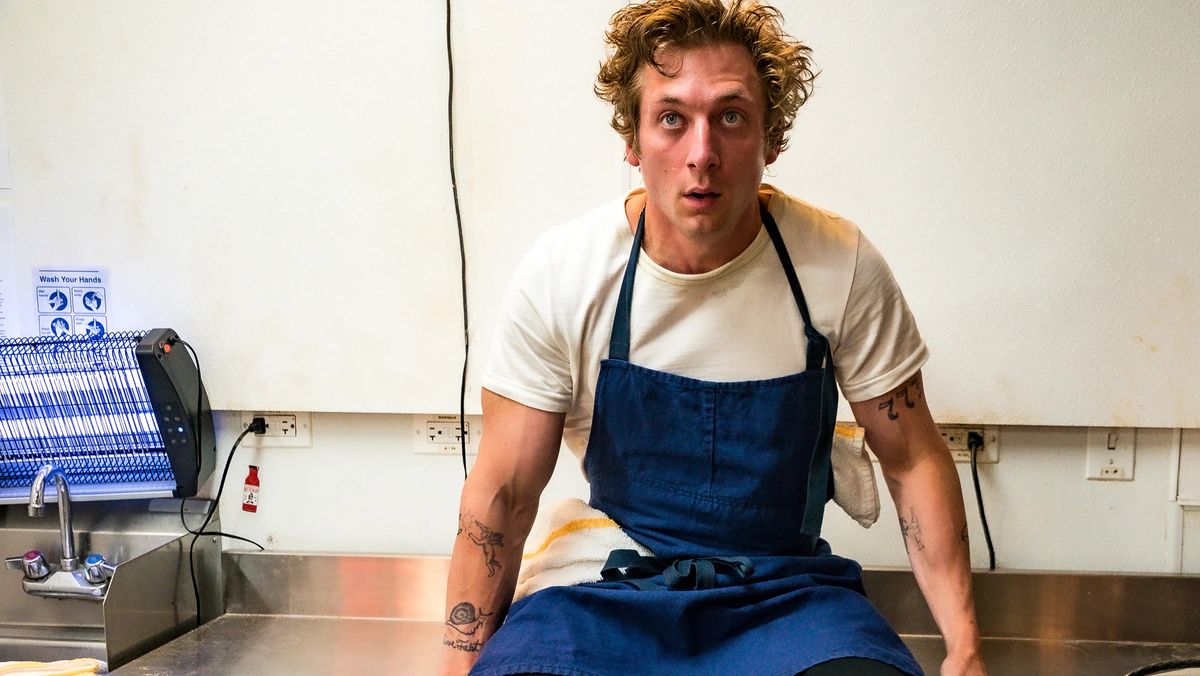
Noice.
When people see a documentary, they’ll see that something similar was used during the battle in the snow. 🙂
Scenic paintings.
Well are the effects outdated? Yes. Are they still awesome and took some crazy skills to bring them alive. Definitely Yes! I would not say that OT looks comparable to modern productions but it has so much flair you don’t even care if you can see that they used matte paintings 🙂
What does ‘outdated’ mean? Does the technique produce a finished effect that sells the action to the audience? If yes, it’s not ‘outdated’.
Well it’s outdated, so that answers your question.
No, it really doesn’t, but thanks for playing. The deal is ‘does this technique work? Yes? Great, use it.’. Claiming the effects in SW, JP, BttF, or any other skillfully executed practical show are ‘outdated’ is meaningless if they sell the shot. If they do, no outdated. It doesn’t matter if a different technique has since been invented.
Well a lot of the shots form the OT DON’T sell the shot anymore, so by your own (already incorrect) logic, they’re outdated. Deal with it.
TUD
Why you always so hostile, man?
You don’t know CRanky like I do. You have to be frank with him.
Do the Stormtroopers in these Mattpaintings move? Do they Salute the Imperator when he leaves his ship? Nope because they can’t. Because they are painted. In modern productions this wouldn’t be an issue. So yes the effects are outdated. It’s like an old ca which is not as fast as a new one or has airconditioning. But it brings a lot of joy to the one who drives it even if it’s outdated.
That’s really, really not the test for if an effect is outdated. The ONLY test is if the shot is effective – that’s it. Needing stormtroopers to salute, run errands, and do the conga is one of the complaints people voiced about the prequels – they’re too busy and distracting in some shots BECAUSE those are possibilities. They aren’t required to make the shot work, and even just end up calling attention to themselves – “Look at me! I’m a digital matte painting!” – whereas the orignal mattes quietly do their job (look at the end of Raiders for example – probably the most successful matte painting ever put on film). Abrams even makes this same point with that janky puppet that pops out of the sand dune on Jakku – could you produce an amazing CGI creature, or an elaborate cable and RC animatonic? Sure, but it’s not necessary to sell that moment – sculpted rubber on a stick – boom, done, and all without tap dancing, farting stormtroopers. It’s crude compared to what’s available, but perfectly effective.
You really don’t know the definition of outdated, do you?
Acoording to your logic you would fight a war with a medieval longsword when everyone uses automated machineguns because you know “the long sword gets the job (of killing your opponent) done so why should it be outdated. Let me give you some examples why mattpainting in the way it was used in the OT is outdated:
1.) preference of the majority of artists: no one is using it anymore which means that it is not equally applicable to CGI. 2.) difficult to combine with animation: you can’t do mattepaintings with multiple animations. This does not mean tap dancing, “farting Stormtroopers” but simple things like dust blowing in the wind, clouds or leaves and grass blowing in the wind. you can’t do that with mattpainting hence it’s outdated. 3.) hard to adjust: you can’t change lightsettings or colours in general. I have rendered multiple still images with diffrent lightsettings and usually the first render is never the best. try changing the lighting in a mattpainting. while it’s just a few clicks in maya or houdini it means repainting the whole mattepainting. 4.) prone to error: the amount of errors is classic mattepaintings is higher. even though they can fool the eye there is always some shading that is not correct or the proportions are off to some degree. you don’t see that on a blurry 70s/80s silverscreen but on a HD Tv screen you can see things like that fairly easy. CGI on the other hand calculates more precisely than any human ever could. 5.) time required: CGI is often a faster way to do things. While it’s still a lot of work to compose and create a photorealistic shot you are often faster than just painting them. Especially shots with a lot of similar assets (eg. the halls in Moria in LotR) can be done a lot faster, especially since multiple people can work on these shots simultaneously while there usually is only one matte painter per painting. 6.) perspective: change of perspective is a lot easier with CGI. You can rotate the camera and rerender the shot if you are not perfectly happy with the camera angle. try that with a mattepainting. 7.) layers: a mattepainting doesn’t have layers. Layers are incredibly important these days because they are so incredibly powerful. No matter if photoshop or aftereffects or Zbrush; they all use them.
There is a lot more to add here but you should have gotten the point by now. Sincerely a Star Wars fan AND someone who has spent years in the field of 3D art (gamedesign)
First pic always says to me “cooo-cherrr…cooooo-cherrr…OW, GODDAMN, MY HEAD!”. And the second pic isn’t the OT I think, it’s one of the Ewok movies.
Awwww! I was hoping that this was a giveaway or announcement of a book about the ones used.
Oh man, I don’t wanna be that hipster guy, but I’m buying matte paintings and miniatures any day over CGI and blue screen. There’s just something organic about these effects that does really foul the eye.. something computers can and i believe will never accomplish. No matter how impressive the CGI sequences are, you can always tell they are fake, while most of the ILM pre 1990’s effects, I dunno, its all just pure magic.. Unbelievable.
Kinda wish the industry would go back to spending money and time on these techniques rather than modeling and animating ridiculously detailed CGI landscapes..
I disagree. Imo, bad matte paintings are just as bad as bad CGI, and good matte paintings are just as good as good CGI.
fair enough; yet, with miniatures and paintings you can only “shoot” like “plausible” scenes, things that are actually portrayable in a real life while with CGI so many artists end up over indulging themselves: say Jakku junkyard chase.. is it impressive? did they render a ridiculous amount of detail of all the wrecked star destroyers? did they devote a ton of time and money to create that sequence? yes, yes, yes. and yet, it feels like a computer game, cuz in reality that’s what it essentially is.
i dunno, again, its all matter of taste and opinions, but i still stand by practical (analogue) over digital in pretty much every domain of art (music/film/photography/painting)
Yeah, and that’s good for you. I personally feel that they exercised a good amount of restrain when it cam to the Jakku sequences. A good filmmaker will use his tools correctly, even if given the chance to do the opposite.
Yeah the cgi used to realise Naboo was pretty good imho.
http://cdn.meme.am/instances/45081339.jpg
I know what you mean, but you may not realize how much matte is still used in to days moves, digital matte, its a photoshop file with layers, its hand painted not on glass like it used to be, but its still organic just the same, its not all CGI, a lot if just a 2D image that came out of someones mind.
Bruh, you sound so pretentious.
Let me guess, you have a bunch of vinyl records at your home instead of CD’s and digital music files?
Try not to spend too much time working on that novel you’ve been working on for some time at your local coffee shop while drinking that organic latte with you pinky up in the air.
-_-
“bruh” I just love how in this day and age anyone who has an opinion that differs from the general “consensus” is called “pretentious” right away haha
Let me answer your guess, I do have a large vinyl collection however 90% of time I listen to the music over Apple Music or lossless downloads if artists offer them. See, I’m a realist, there’s nothing wrong with digital as long as on the consumer end of things there is an education and understanding what it is, which is basically shit.
I’m not working on a novel, I’m professional musician, but maybe I should try writing something one of these days. I don’t really do coffee shops, actually, again, hate to disappoint you, I drink Starbucks like a most of us. I usually do Pike Place tho, can’t stand lattes.
Where is this all going? I suppose what i’m trying to say is that by finding analogue superior to digital doesn’t always make you comb your mustache every morning and ride bicycle to work. It fascinates me how the term “hipster” had evolved in the last 10 years, basically turning into the label for everyone and everything that questions and challenges modern day mediums and practices.
Is Chris Nolan a pretentious hipster for shooting everything on film? Are many artists (Foo’s, RHCP, KOL to name a few) pretentious hipster acts for always recording on tape? Is Annie Leibovitz a pretentious hipster for shooting almost exclusively on 35 mm? Well, you’re the only one to truly know the answer.
there was tons and tons of blue screen work in the original trilogy.
Thanks for posting these images & the video. I’ve always been a big fan of matte painting. I remember watching a documentary on PBS as a kid about tge multiple layers so matte paintings in the original King Kong movie. I’ve seen a few in person, including ones used in Star Wars. It amazing to see how simple some of them are — given how well they fool our eyes on screen.
There is just NO understating of the impact McQuarrie had on the SW galaxy: https://www.youtube.com/watch?v=H9iBIaQMlOg
They got the “look and feel” of the OT right, now let’s hope that for E8 they get the inventiveness and imagination parts right too
What sells this artwork is so well is its insanely naturalistic and believable lighting. I have literally never seen CGI that looks so beautifully lit. These artists were geniuses
Here we go again with the effects talk, getting people all worked up smh.
As for TFA, to me, things looked different than the OT. I’m not saying that it looked bad at all, but different.
And no, I don’t agree with the statement that the all the effects in the OT still look good even to this day. A lot of the matte paintings and stop-motion effects do seem obvious today, even in the SE. Furthermore, if it wasn’t for the SE, the OT movies would look much worst right now age-wise.
Using CGI they can do much more things, but it requires many more hours of work to get a good result.
These paintings are amazing, and they look better in the movies than many actual CGIs.
You know, I was just feeling really inspired and then I saw how many are using this beautiful art form as an excuse to bitch and moan about CGI, what gives?
I would like to point out that it took us thousands of years to learn how to paint worth a damn, and we only really started getting good at painting when super-rich wackos like the Greeks and Rennaisance-era folk were willing to pay artists to dedicate their entire life to it full-time.
Flash-forward to present day and humans are still only just now learning to draw on computers. Let me say this again, Paint: 2,000+ years. Computers: 20 years. Where is the comparison? In all honesty, I think CGI is doing quite good for itself, considering that using a computer is an ENTIRELY DIFFERENT skill set.
Try to draw a horse on a piece of paper. Now try to draw that same horse on MS Paint. If you’ve ever tried this, you’d find that using a computer to make it look good is f###ing hard, hard because we have practice using pencils. This learning-gap is the exact reason computer stylus “pens” are making tons of money right now, and if you’ve seen a good computer-artist using Photoshop to make a “painting”, you’d see that it’s indistinguishable from a photo-realistic painting. So it’s not the technology that’s the issue, it’s the fact that humans have only started seriously dedicating their life to drawing on a computer in the last 20 years, and so far we’re proving fast learners.
Just compare Life of Pi with Tron and you’ll see things are picking up in a comparably minuscule time-frame.
And you’ll notice that just now that we’re reaching the 2nd generation of CGI-using humans, CGI has suddenly got way better, and this is due to young animators who have literally spent their life doing this, and older animators to pass on the previous 20 years worth of knowledge. Not to mention computer-processing power is, what? 20 times what it was when we started? (I don’t know the exact estimate).
But the real factor at play is payed time. These matte painters had a lot of customers in days of old, and so they had proper incentive and dedicated time to get good at their job. So it stands to reason, a movie with sloppy matte-painting is a poorly-funded, rushed movie.
Compare this with movie’s nowadays, which are just as rushed (if not more) and sometimes over-stretch their budgets’ capacities, resulting in cheaper (less skilled) compositors, OR good compositors that are too rushed to do their job properly. Hence the Scorpion in “Mummy Returns” and “King Kong”‘s Dino sequence, respectively.
All this is to say that CGI is actually superior, but we’re only just now learning how to harness it. This is not to degrade the artists in the above video.
I would like to stress that my opinions about CGI vs Physical are in no way and will never reflect on my opinions of the artist. A good artist can (with proper practice) make a masterpiece on a computer or a canvas. If Ralph McQuarrie were around today, he’d be using a computer.
So really, the thing to celebrate in all of this is the talent of the artists — no matter the medium — to create truly beautiful works.
Utterly amazing. Such beautiful work…
This was the “CGI” of ESB and RTOJ, and actually the result was better than many CGIs.
Agreed. One thing I cannot ignore is the fact that WELL DONE CGI as well as paintings can be simply stunning.
Folks, I think the crux of the biscuit here for the practical effects crowd (of which I must admit being a part of myself) may be something that George Lucas said back in the 1980s in the “From Star Wars To Jedi: The Making of a Saga” documentary. I’m paraphrasing from memory here, but as I recall he said something along the lines of:
“The problem when a lot of filmmakers create an exotic environment, is that they spend screen time on it. And you don’t need to spend a lot of screen time to establish these environments.”
In other words, he felt (at least back when he had just finished making ROTJ) that it was a common trap for fantasy and sci-fi filmmakers to waste a lot of time showing off all the work they did on sets and costumes and matte paintings and so forth as they created these fantastic worlds, and that this could easily get in the way of the story being told.
Speaking for myself (and I think this may cover a lot of other people who don’t care for an overabundance of CGI) I feel that the use of CGI can very quickly become overuse when filmmakers get too hung up on showing (and showing and showing and showing) how clever they and their team are with their CGI creations. In many cases, the end result is movies that are so focused on their CGI that the script itself – the story and character development – end up taking a back seat to the onscreen spectacle. The screen gets so packed with CGI animation that the movie has a tendency to become primarily a visual spectacle rather than a character journey.
There’s also a tendency to “show the shark too soon”. In a classic example of the limitations of special effects resulting in a far more powerful movie, when he made Jaws, Steven Spielberg didn’t show the shark full on until the third act of the movie – mainly because he couldn’t get the mechanical shark to work properly. His original plan had been to follow Peter Benchley’s novel and show the shark onscreen throughout the movie, but ol’ Bruce the mechanical shark just didn’t look believable enough for that plan to work. So Spielberg held off on showing him up close until they were out on the Orca and Brody “chummed some of this shit” right onto the shark’s head as it suddenly popped up a few feet astern of the boat.
Up to that point, the shark was this deadly phantom lurking just offscreen, or showing little more than its fin cutting through the water. This is a big part of what terrified audiences, and set them up for the shock of finally seeing the shark full on when they were least expecting it.
In the age of CGI, Jaws would have had a much less dramatic and suspenseful impact, because we’d have seen the shark practically before the credits had finished rolling.
The beauty of matte paintings is not only that they so effectively create the illusion of a much larger and detailed environment without the need to build massive sets, but that by their very nature a filmmaker cannot spend a ton of screen time on them, lest the illusion be broken. Matte paintings help to establish onscreen environments for the audience while strongly reducing the temptation for filmmakers to derail the story by showing shot after shot of those onscreen environments just for their own sake.
CGI can absolutely be used this way, but it doesn’t have that built-in self limitation that discourages the tendency to focus more on effects and environments than on the story. IMHO, it’s almost always better for a filmmaker to be judicious in his or her reliance on CGI for this reason. It’s not that I think that CGI is bad in and of itself, mind you. Merely that it can (and often does) encourage lazy storytelling because it’s so easy to pack a movie with flash and “EXTREEEEEEME!!!” visuals while giving short shrift to the script and the characters.
(All y’all’s mileage may vary, of course…)
Amazing!
It blows my mind, that people are so talented that they can paint that well.
Absolutely. It wasn’t until a few years ago that I realized that some of the work was painted. It completely staggers me the work they did.